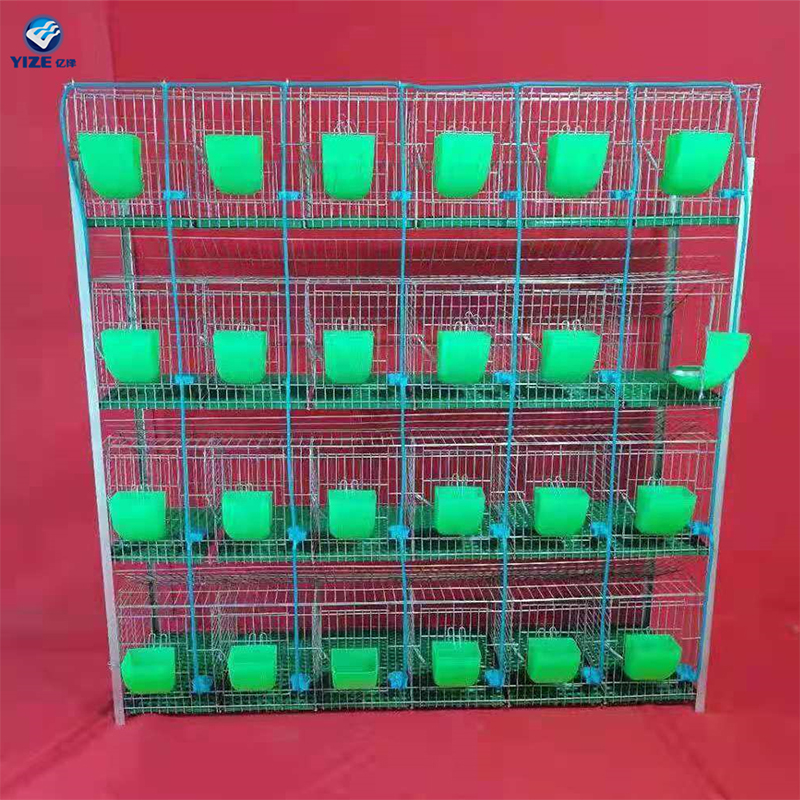Efficient Production of Eco-Friendly Egg Trays Using Advanced Manufacturing Technology
Nov . 04, 2024 19:48 Back to list
Efficient Production of Eco-Friendly Egg Trays Using Advanced Manufacturing Technology
The Egg Tray Manufacturing Machine A Sustainable Solution for Egg Packaging
In recent years, the demand for sustainable packaging solutions has surged, prompting manufacturers to explore eco-friendly alternatives. One such innovation is the egg tray manufacturing machine, a critical player in the agricultural and food packaging industries. This machine produces egg trays that are not only efficient and durable but also eco-conscious, serving as a perfect blend of functionality and environmental responsibility.
Egg trays are essential for the safe transportation and storage of eggs. Traditionally made from plastic, which poses a significant environmental threat due to its non-biodegradable nature, the egg tray industry has shifted towards paper pulp-based solutions. The egg tray manufacturing machine processes waste paper into molded pulp, which is then shaped into trays that cradle eggs securely. This transition helps reduce plastic waste and promotes recycling, making it a favorable option for environmentally conscious businesses.
The Manufacturing Process
The egg tray manufacturing process begins with the collection of raw materials, primarily recycled paper products such as newspapers, cardboard, and other paper waste. These materials are pulped in a mixture with water to create a slurry. This slurry is then poured into molds that are designed to shape the paper pulp into trays.
Key components of the egg tray manufacturing machine include the pulping system, molding system, drying system, and packaging system.
1. Pulping System The first step involves shredding and mixing the collected paper waste with water to form a homogenous pulp. This stage is crucial as it determines the final quality of the trays produced.
2. Molding System The pulp slurry is placed in molds, where it takes the shape of the trays. Vacuum suction or pressure is used to remove excess water from the pulp, ensuring a solid structure.
3. Drying System After molding, the trays require drying to achieve the desired strength and durability. This can be done using natural sunlight or mechanical dryers, depending on the scale of the operation and available resources.
4. Packaging System Once dried, the trays are stacked and packaged for distribution. Some machines also incorporate automatic packaging systems, enhancing efficiency and reducing labor costs.
egg tray manufacturing machine

Advantages of Using Egg Tray Manufacturing Machines
The adoption of egg tray manufacturing machines comes with numerous benefits
- Sustainability Utilizing recycled paper significantly reduces the reliance on plastic, aiding in environmental conservation. These trays are biodegradable and can be effectively decomposed, contributing to waste reduction.
- Economic Efficiency The machines often require a relatively low investment compared to traditional manufacturing setups. They operate with reduced energy consumption, leading to lower operational costs.
- Quality and Protection The molded pulp trays provide excellent cushioning and protection for eggs during transportation, minimizing the risk of breakage and spoilage. This ensures that consumers receive quality products, enhancing customer satisfaction.
- Customizability Manufacturers can easily modify the design and size of the trays to meet specific client requirements. This flexibility is a significant advantage over traditional packaging solutions.
Conclusion
As the world becomes increasingly aware of the environmental challenges posed by plastic waste, the egg tray manufacturing machine stands out as a beacon of sustainable innovation. By converting recycled paper into functional and eco-friendly egg packaging, this technology not only enhances the efficiency of the egg distribution process but also contributes to a cleaner planet.
Investing in an egg tray manufacturing machine is not just a business decision; it’s a step towards a more sustainable future. With continuous advancements in technology and an increasing focus on eco-friendly practices, the egg tray manufacturing industry is poised for growth, paving the way for a greener tomorrow. Whether for small-scale farms or large-scale producers, these machines offer an ideal solution to meet both economic and environmental needs.
-
Automatic Feeding Line System-Pan Feeder Nipple Drinker|Anping County Yize Metal Products Co., Ltd.
NewsJul.29,2025
-
Hot Sale 24 & 18 Door Rabbit Cages - Premium Breeding Solutions
NewsJul.25,2025
-
Automatic Feeding Line System Pan Feeder Nipple Drinker - Anping County Yize Metal Products Co., Ltd.
NewsJul.21,2025
-
Automatic Feeding Line System Pan Feeder Nipple Drinker - Anping County Yize Metal Products Co., Ltd.
NewsJul.21,2025
-
Automatic Feeding Line System - Anping Yize | Precision & Nipple
NewsJul.21,2025
-
Automatic Feeding Line System - Anping Yize | Precision & Nipple
NewsJul.21,2025






